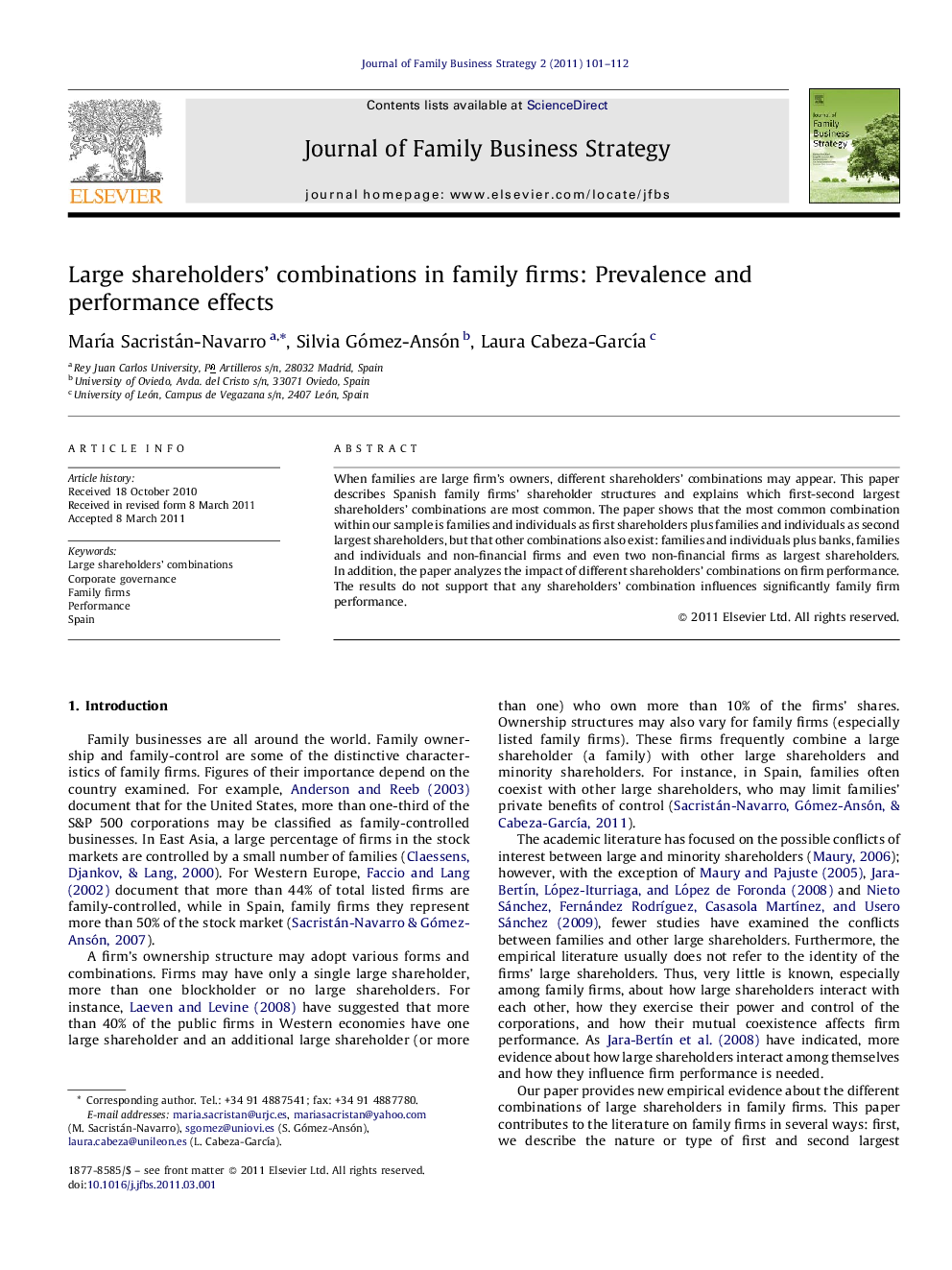| Article ID | Journal | Published Year | Pages | File Type |
|---|---|---|---|---|
| 1020193 | Journal of Family Business Strategy | 2011 | 12 Pages |
When families are large firm's owners, different shareholders’ combinations may appear. This paper describes Spanish family firms’ shareholder structures and explains which first-second largest shareholders’ combinations are most common. The paper shows that the most common combination within our sample is families and individuals as first shareholders plus families and individuals as second largest shareholders, but that other combinations also exist: families and individuals plus banks, families and individuals and non-financial firms and even two non-financial firms as largest shareholders. In addition, the paper analyzes the impact of different shareholders’ combinations on firm performance. The results do not support that any shareholders’ combination influences significantly family firm performance.
► Describes the nature of the first and second largest shareholders within family firms. ► Analyzes the impact of different shareholders’ combinations on family firm performance. ► Shareholders’ combinations do not seem to influence firm performance. ► Discusses how families exercise their control rights.
